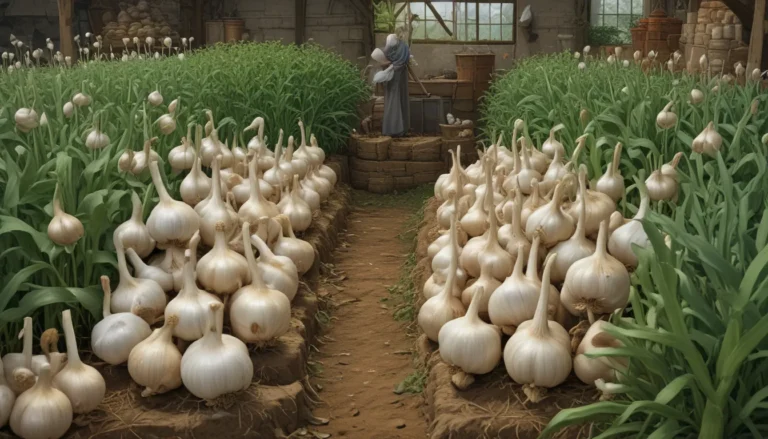Creating Your Own Natural Comfrey Tea Fertilizer for a Healthier Garden

Are you looking for a sustainable, cost-effective way to fertilize your garden without relying on store-bought products that may contain unwanted chemicals? Look no further – comfrey tea fertilizer is a fantastic solution that you can easily make at home using comfrey plants from your garden.
Comfrey is a hardy perennial plant that grows quickly, boasts beautiful flowers, and provides a nutrient-rich source of fertilizer that can be used throughout the growing season. In this article, we will delve into the details of how to grow and harvest comfrey, what makes it a dynamic accumulator of nutrients, how to make comfrey tea fertilizer, how to use it effectively in your garden, and alternative methods for utilizing this powerhouse plant.
Why Comfrey Is a Dynamic Accumulator
Comfrey is often referred to as a “dynamic accumulator” in permaculture terms. While there is some debate among experts about the precise definition of this term, it is widely recognized that comfrey is a rich source of essential nutrients that plants need to thrive.
Plants require three key macronutrients – nitrogen, phosphorus, and potassium (known as NPK) – for healthy growth and development. Comfrey contains high levels of all three of these macronutrients, making it a valuable addition to any garden. Additionally, comfrey accumulates essential micronutrients such as calcium and magnesium, which are crucial for optimal plant health.
This plant’s deep taproots draw nutrients from the soil, storing them in the leaves for later use. By harvesting mature comfrey leaves, gardeners can create liquid feed, mulch, or boost their compost with nutrient-rich materials.
While the superiority of comfrey as a fertilizer plant is not scientifically proven, many gardeners have reported positive results from using comfrey tea fertilizer in their gardens.
Natural Pest Control Benefits of Comfrey
In addition to its nutrient-rich composition, comfrey offers natural pest control benefits for your garden. Some gardeners use comfrey tea as a foliar spray to prevent powdery mildew on plant leaves. This application can help inhibit the germination of spores and protect your plants from fungal diseases.
Comfrey also attracts beneficial predatory insects such as wasps and spiders, which can help reduce pest populations in your garden. By incorporating comfrey into your garden, you can create a more balanced ecosystem that supports both plant health and natural pest management.
How to Make Comfrey Tea Fertilizer
Creating comfrey tea fertilizer is a straightforward process that you can easily do at home. Here’s a step-by-step guide to making your own liquid fertilizer from comfrey leaves:
Harvest Comfrey Leaves
- Start by collecting a bucket full of large, fuzzy comfrey leaves. Wear gloves while harvesting to protect your skin from the plant’s fine hairs.
- Cut the leaves about 2 feet tall, leaving a couple of inches above the soil. Harvest the outer leaves first to promote continuous growth.
- Place the leaves in a bucket, pressing them down firmly. You can add weight on top to keep them submerged, then fill the bucket with water.
- Consider chopping or shredding the leaves for faster decomposition.
Let It Steep
- Place the bucket in a protected area in the garden and allow the leaves to ferment.
- For a strong tea, steep the leaves for 3 to 6 weeks until they break down into a slurry paste. The foul odor indicates that the nutrients are being released.
- You can also use comfrey tea steeped for shorter durations, depending on your needs. A warm environment can expedite the decomposition process.
Prepare the Fertilizer
- Once the leaves have decomposed, strain out the leafy remains from the liquid.
- Dilute the tea with water to a suitable concentration. The darker the liquid, the more dilution is required.
- Optimal dilution ratios range from 1:2 to 1:15 parts tea to water based on the strength of the mixture.
Application Tips
- Avoid using comfrey tea on seedlings or young plants, and dilute the concentration for younger crops.
- Apply the fertilizer when expecting dry weather to maximize its effectiveness.
- For best results, apply just as plants begin to flower and set fruit for optimal nutrient uptake.
Alternative Methods for Using Comfrey
If brewing comfrey tea is not your preferred method, there are alternative ways to utilize this nutrient-rich plant in your garden:
- Use comfrey leaves as mulch by side dressing them around plants or adding them to fallow beds.
- Incorporate comfrey leaves into your compost pile to accelerate decomposition and boost nitrogen levels.
- Place shredded comfrey leaves at the bottom of planting holes before transplanting seedlings to release nutrients slowly into the soil.
By exploring these alternative methods, you can find the approach that best suits your gardening style and preferences.
Closed Loop Gardening with Comfrey
Comfrey is a versatile plant that offers numerous benefits for your garden, from providing essential nutrients to supporting natural pest management. By incorporating comfrey tea fertilizer into your gardening routine, you can create a closed-loop system that recycles nutrients and organic materials back into your garden.
Next time your plants need a boost, consider using comfrey tea as a natural fertilizer to nourish your garden and promote healthy growth.
Have you used comfrey as a fertilizer in your garden? Share your experiences and insights in the comments below!
For more organic gardening tips and sustainable practices, explore our guides on cover cropping, worm farming, and natural pest control solutions for your garden.
Grab your garden gloves, get your comfrey plants ready, and start creating your own nutrient-rich fertilizer for a thriving garden ecosystem. Happy gardening!





